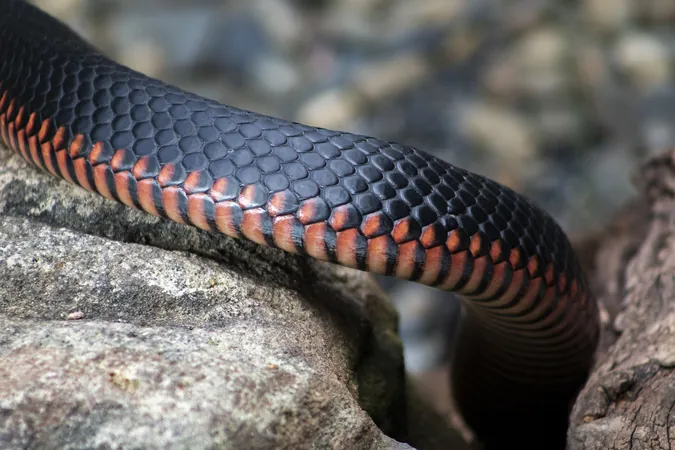
Urban Encounters: Uncovering a Decade of Reptile Rescues in Sydney
2024-10-01
Introduction
In an eye-opening study, researchers have delved into a decade’s worth of wildlife rescue data in New South Wales, shedding light on the intriguing dynamics between humans and reptiles in urban settings. Conducted by experts at Macquarie University in collaboration with scholars from Charles Darwin University and the NSW Department of Climate Change, Energy, the Environment and Water, this comprehensive analysis encompasses a staggering 37,000 records of snake and lizard rescues across the Greater Sydney region from 2011 to 2021.
Key Findings
The findings, published in the prestigious journal Royal Society Open Science, reveal significant insights into human perceptions and responses to wildlife. Lead author Teagan Pyne, a Master’s graduate in Conservation Biology from Macquarie University, noted, 'Our analysis reflects the public's varied perceptions of different reptilian species. While large reptiles attract attention—often out of fear or as seen as nuisances—most small reptiles go unnoticed and unreported.'
Larger Reptiles in Record Numbers
One of the intriguing observations from the study is the clear trend that larger reptiles dominate rescue records. Specifically, the sleek yet venomous red-bellied black snake and the often harmless eastern blue-tongue lizard make up nearly two-thirds of all recorded rescues. Dr. Chris Jolly, a co-author and conservation biologist, emphasized, 'The primary reason for reptile rescues often stems from calls to address 'unsuitable environments,' which commonly translates to people wanting to remove snakes from their backyards.'
Impact of Urbanization
As Sydney continues its brisk pace of urbanization, the paper urges the need for understanding the patterns that emerge from these human-reptile interactions. The research reflects a notable seasonal spike in rescues, with numbers tripling from August to September, marking the commencement of Australia’s spring. This trend correlates with heightened reptile activity during warmer months.
Diversity of Reptiles in Sydney
Dr. Jolly attributes Sydney's noteworthy diversity of reptiles to its retained bushland, which provides a conducive environment for wildlife. He explains, 'Sydney's unique topography, with its waterways and hills, allows for a rich population of reptiles, including eastern blue-tongue lizards that residents frequently see in their gardens.'
Public Awareness and Snake Bites
Despite the presence of potentially dangerous snakes in urban areas, the researchers noted a surprising statistic: very few snake bites are reported each year. This phenomenon suggests a growing public awareness and education about the risks associated with venomous snakes, leading to safer behaviors, such as wearing shoes outdoors and recognizing which snakes pose threats.
Historical Comparison
In an interesting twist, the research team compared current data against a similar study conducted two decades prior. Professor Rick Shine, senior author of the study, remarked, 'While rescue operations have increased tenfold in recent years, the same dominant large-bodied species persist in these rescue records.'
Conclusion
Overall, this in-depth examination of wildlife rescue data opens a window into understanding human-wildlife interactions in an increasingly urbanized world. As residents and conservationists alike continue to adapt to living alongside these fascinating creatures, the lessons gleaned from such studies will be crucial for cohabiting harmoniously with nature. Are we prepared to embrace our scaly neighbors in Sydney, or will fear dictate our actions?


 Brasil (PT)
Brasil (PT)
 Canada (EN)
Canada (EN)
 Chile (ES)
Chile (ES)
 España (ES)
España (ES)
 France (FR)
France (FR)
 Hong Kong (EN)
Hong Kong (EN)
 Italia (IT)
Italia (IT)
 日本 (JA)
日本 (JA)
 Magyarország (HU)
Magyarország (HU)
 Norge (NO)
Norge (NO)
 Polska (PL)
Polska (PL)
 Schweiz (DE)
Schweiz (DE)
 Singapore (EN)
Singapore (EN)
 Sverige (SV)
Sverige (SV)
 Suomi (FI)
Suomi (FI)
 Türkiye (TR)
Türkiye (TR)